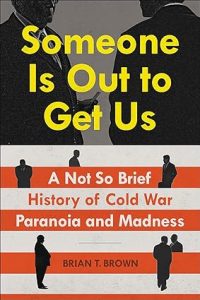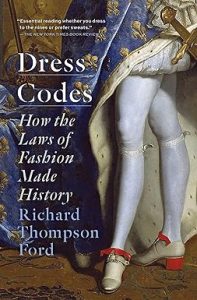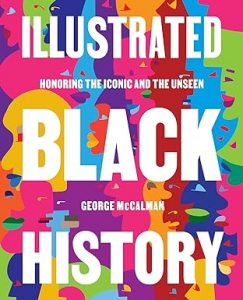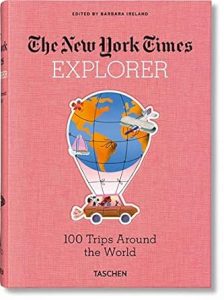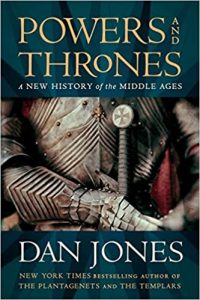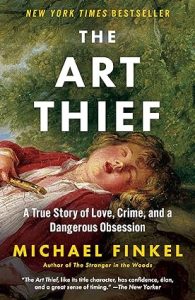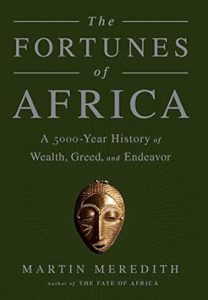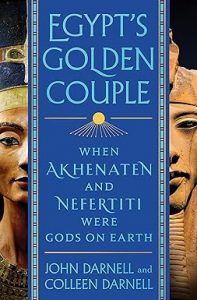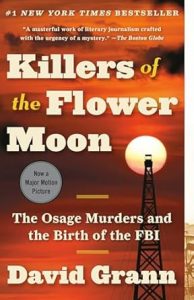Someone Is Out To Get Us
₦20,000.00In Someone Is Out to Get Us, Brian T. Brown explores the delusions, absurdities, and best-kept secrets of the Cold War, during which the United States fought an enemy of its own making for over forty years — and nearly scared itself to death in the process. The nation chose to fear a chimera, a rotting communist empire that couldn’t even feed itself, only for it to be revealed that what lay behind the Iron Curtain was only a sad Potemkin village.
In fact, one of the greatest threats to our national security may have been our closest ally. The most effective spy cell the Soviets ever had was made up of aristocratic Englishmen schooled at Cambridge. Establishing a communist peril but lacking proof, J. Edgar Hoover became our Big Brother, and Joseph McCarthy went hunting for witches. Richard Nixon stepped into the spotlight as an opportunistic, ruthless Cold Warrior; his criminal cover-up during a dark presidency was exposed by a Deep Throat in a parking garage.
Someone Is Out to Get Us is the true and complete account of a long-misunderstood period of history during which lies, conspiracies, and paranoia led Americans into a state of madness and misunderstanding, too distracted by fictions to realize that the real enemy was looking back at them in the mirror the whole time.
Dress Codes
₦20,000.00Dress codes are as old as clothing itself. For centuries, clothing has been a wearable status symbol; fashion, a weapon in struggles for social change; and dress codes, a way to maintain political control. Merchants dressing like princes and butchers’ wives wearing gem-encrusted crowns were public enemies in medieval societies structured by social hierarchy and defined by spectacle. In Tudor England, silk, velvet, and fur were reserved for the nobility, and ballooning pants called “trunk hose” could be considered a menace to good order. The Renaissance-era Florentine patriarch Cosimo de Medici captured the power of fashion and dress codes when he remarked, “One can make a gentleman from two yards of red cloth.” Dress codes evolved along with the social and political ideals of the day, but they always reflected struggles for power and status. In the 1700s, South Carolina’s “Negro Act” made it illegal for Black people to dress “above their condition.” In the 1920s, the bobbed hair and form-fitting dresses worn by free-spirited flappers were banned in workplaces throughout the United States, and in the 1940s, the baggy zoot suits favored by Black and Latino men caused riots in cities from coast to coast.
Even in today’s more informal world, dress codes still determine what we wear, when we wear it—and what our clothing means. People lose their jobs for wearing braided hair, long fingernails, large earrings, beards, and tattoos or refusing to wear a suit and tie or make-up and high heels. In some cities, wearing sagging pants is a crime. And even when there are no written rules, implicit dress codes still influence opportunities and social mobility. Silicon Valley CEOs wear t-shirts and flip-flops, setting the tone for an entire industry: women wearing fashionable dresses or high heels face ridicule in the tech world, and some venture capitalists refuse to invest in any company run by someone wearing a suit.
In Dress Codes, law professor and cultural critic Richard Thompson Ford presents a “deeply informative and entertaining” (The New York Times Book Review) history of the laws of fashion from the middle ages to the present day, a walk down history’s red carpet to uncover and examine the canons, mores, and customs of clothing—rules that we often take for granted. After reading Dress Codes, you’ll never think of fashion as superficial again—and getting dressed will never be the same.
Winnie and Nelson: Portrait of a Marriage
₦20,000.00One of the most celebrated political leaders of a century, Nelson Mandela has been written about by many biographers and historians. But in one crucial area, his life remains largely untold: his marriage to Winnie Madikizela-Mandela. During his years in prison, Nelson grew ever more in love with an idealized version of his wife, courting her in his letters as if they were young lovers frozen in time. But Winnie, every bit his political equal, found herself increasingly estranged from her jailed husband’s politics. Behind his back, she was trying to orchestrate an armed seizure of power, a path he feared would lead to an endless civil war.
Jonny Steinberg tells the tale of this unique marriage—its longings, its obsessions, its deceits—making South African history a page-turning political biography. Winnie and Nelson is a modern epic in which trauma doesn’t affect just the couple at its center, but an entire nation. It is also a Shakespearean drama in which bonds of love and commitment mingle with timeless questions of revolution, such as whether to seek retribution or a negotiated peace. Steinberg reveals, with power and tender emotional insight, how far these forever-entwined leaders would go for each other and where they drew the line. For in the end, both knew theirs was not simply a marriage, but a contest to decide how apartheid should be fought.
Illustrated Black History
₦20,000.00Illustrated Black History is a breathtaking collection of original portraits depicting black heroes—both famous and unsung—who made their mark on activism, science, politics, business, medicine, technology, food, arts, entertainment, and more. Each entry includes a lush drawing or painting by artist George McCalman, along with an insightful essay summarizing the person’s life story.
The 145 entries range from the famous to the little-known, from literary luminary James Baldwin to documentarian Madeline Anderson, who produced “I Am Somebody” about the 1969 strike of mostly female hospital workers; from Aretha Franklin to James and Eloyce Gist, who had a traveling ministry in the early 1900s; from Colin Kaepernick to Guion S. Bluford, the first Black person to travel into space.
Beautifully designed with over 300 unique four-color artworks and accessible to readers of all ages, this eye-opening, educational, dynamic, and timely compendium pays homage to Black Americans and their achievements, and showcases the depth and breadth of Black genius.
The New York Times Explorer: 100 Trips Around The World
₦20,000.00Whether it’s a culinary adventure in vibrant Mexico City, an historic and meditative train ride through Siberia, or a solo trip to Paris, get your bucket lists ready with the discoveries of Explorer a curated collection of 100 dream trips from the distinguished travel writers and photographers of The New York Times.
In four volumes’ worth of adventures in one, the Times writers offer guidance, from the personal to the practical, along with a wealth of color photographs that capture the catch-your-breath awe of each destination. Motor past pink sands and bougainvillea in Bermuda with Andrew McCarthy, follow Virginia Woolf’s footsteps through the English countryside with Francine Prose, or dare to pilot a boat through the Venice lagoon with Tony Perrottet.
NYT Explorer. 100 Trips Around the World takes travel beyond the obvious with adventures in exotic places and new perspectives in familiar ones, all based on the distinguished travel journalism of The New York Times. Each journey features a first-person narrative and postcard-perfect photography, capturing the unique personality of the destination—as well as practical information to help get you on your way. Edited by Barbara Ireland, whose 36 Hours travel series has been a TASCHEN best seller, Explorer features color-coded tabs and a ribbon to bookmark your favorite stops in each region. Even in times when physical travel is not possible, you can just flip through the pages of this book, marvel at the beauty and wonder in our world, and dream.
Legacy Of Violence
₦20,000.00Sprawling across a quarter of the world’s land mass and claiming nearly seven hundred million people, Britain’s twentieth-century empire was the largest empire in human history. For many Britons, it epitomized their nation’s cultural superiority. But what legacy did the island nation deliver to the world? Covering more than two hundred years of history, Caroline Elkins reveals an evolutionary and racialized doctrine that espoused an unrelenting deployment of violence to secure and preserve the nation’s imperial interests. She outlines how ideological foundations of violence were rooted in the Victorian era calls for punishing recalcitrant “natives,” and how over time, its forms became increasingly systematized. And she makes clear that when Britain could no longer maintain control over the violence it provoked and enacted, it retreated from empire, destroying and hiding incriminating evidence of its policies and practices.
Drawing on more than a decade of research on four continents, Legacy of Violence implicates all sides of Britain’s political divide in the creation, execution, and cover-up of imperial violence. By demonstrating how and why violence was the most salient factor underwriting Britain’s empire and the nation’s imperial identity at home, Elkins upends long-held myths and sheds new light on empire’s role in shaping the world today.
Powers and Thrones: A New History of the Middle Ages
₦20,000.00When the once-mighty city of Rome was sacked by barbarians in 410 and lay in ruins, it signaled the end of an era–and the beginning of a thousand years of profound transformation. In a gripping narrative bursting with big names—from St Augustine and Attila the Hun to the Prophet Muhammad and Eleanor of Aquitaine—Dan Jones charges through the history of the Middle Ages. Powers and Thrones takes readers on a journey through an emerging Europe, the great capitals of late Antiquity, as well as the influential cities of the Islamic West, and culminates in the first European voyages to the Americas.
The medieval world was forged by the big forces that still occupy us today: climate change, pandemic disease, mass migration, and technological revolutions. This was the time when the great European nationalities were formed; when the basic Western systems of law and governance were codified; when the Christian Churches matured as both powerful institutions and the regulators of Western public morality; and when art, architecture, philosophical inquiry and scientific invention went through periods of massive, revolutionary change.
The West was rebuilt on the ruins of an empire and emerged from a state of crisis and collapse to dominate the world. Every sphere of human life and activity was transformed in the thousand years covered by Powers and Thrones. As we face a critical turning point in our own millennium, Dan Jones shows that how we got here matters more than ever.
The Scandal Of The Century
₦19,000.00From one of the titans of twentieth-century literature, collected here for the first time: a selection of his journalism from the late 1940s to the mid-1980s–work that he considered even more important to his legacy than his universally acclaimed works of fiction.
“I don’t want to be remembered for One Hundred Years of Solitude or for the Nobel Prize but rather for my journalism,” Gabriel García Márquez said in the final years of his life. And while some of his journalistic writings have been made available over the years, this is the first volume to gather a representative selection from across the first four decades of his career–years during which he worked as a full-time, often muckraking, and controversial journalist, even as he penned the fiction that would bring him the Nobel Prize in 1982.
Here are the first pieces he wrote while working for newspapers in the coastal Colombian cities of Cartagena and Barranquilla . . . his longer, more fictionlike reportage from Paris and Rome . . . his monthly columns for Spain’s El País. And while all the work points in style, wit, depth, and passion to his fiction, these fifty pieces are, more than anything, a revelation of the writer working at the profession he believed to be “the best in the world.”
The Art Thief
₦18,000.00In this spellbinding portrait of obsession and flawed genius, the best-selling author of The Stranger in the Woods brings us into Breitwieser’s strange world—unlike most thieves, he never stole for money, keeping all his treasures in a single room where he could admire them.
For centuries, works of art have been stolen in countless ways from all over the world, but no one has been quite as successful at it as the master thief Stéphane Breitwieser. Carrying out more than two hundred heists over nearly eight years—in museums and cathedrals all over Europe—Breitwieser, along with his girlfriend who worked as his lookout, stole more than three hundred objects, until it all fell apart in spectacular fashion.
In The Art Thief, Michael Finkel brings us into Breitwieser’s strange and fascinating world. Unlike most thieves, Breitwieser never stole for money. Instead, he displayed all his treasures in a pair of secret rooms where he could admire them to his heart’s content. Possessed of a remarkable athleticism and an innate ability to circumvent practically any security system, Breitwieser managed to pull off a breathtaking number of audacious thefts. Yet these strange talents bred a growing disregard for risk and an addict’s need to score, leading Breitwieser to ignore his girlfriend’s pleas to stop—until one final act of hubris brought everything crashing down.
This is a riveting story of art, crime, love, and an insatiable hunger to possess beauty at any cost.
The Fortunes Of Africa
₦18,000.00A sweeping history the fortune seekers, adventurers, despots, and thieves who have ruthlessly endeavored to extract gold, diamonds, and other treasures from Africa and its people.
Africa has been coveted for its rich natural resources ever since the era of the Pharaohs. In past centuries, it was the lure of gold, ivory, and slaves that drew merchant-adventurers and conquerors from afar. In modern times, the focus of attention is on oil, diamonds, and other rare earth minerals.
In this vast and vivid panorama of history, Martin Meredith follows the fortunes of Africa over a period of 5,000 years. With compelling narrative, he traces the rise and fall of ancient kingdoms and empires; the spread of Christianity and Islam; the enduring quest for gold and other riches; the exploits of explorers and missionaries; and the impact of European colonization. He examines, too, the fate of modern African states and concludes with a glimpse of their future.
His cast of characters includes religious leaders, mining magnates, warlords, dictators, and many other legendary figures-among them Mansa Musa, ruler of the medieval Mali empire, said to be the richest man the world has ever known.
Caste
₦17,000.00In this brilliant book, Isabel Wilkerson gives us a masterful portrait of an unseen phenomenon in America as she explores, through an immersive, deeply researched, and beautifully written narrative and stories about real people, how America today and throughout its history has been shaped by a hidden caste system, a rigid hierarchy of human rankings.
Beyond race, class, or other factors, there is a powerful caste system that influences people’s lives and behavior and the nation’s fate. Linking the caste systems of America, India, and Nazi Germany, Wilkerson explores eight pillars that underlie caste systems across civilizations, including divine will, bloodlines, stigma, and more. Using riveting stories about people—including Martin Luther King, Jr., baseball’s Satchel Paige, a single father and his toddler son, Wilkerson herself, and many others—she shows the ways that the insidious undertow of caste is experienced every day. She documents how the Nazis studied the racial systems in America to plan their outcasting of the Jews; she discusses why the cruel logic of caste requires that there be a bottom rung for those in the middle to measure themselves against; she writes about the surprising health costs of caste, in depression and life expectancy, and the effects of this hierarchy on our culture and politics. Finally, she points forward to ways America can move beyond the artificial and destructive separations of human divisions, toward hope in our common humanity.
Original and revealing, Caste: The Origins of Our Discontents is an eye-opening story of people and history, and a reexamination of what lies under the surface of ordinary lives and of American life today.
Egypt’s Golden Couple
₦16,000.00Akhenaten has been the subject of radically different, even contradictory, biographies. The king has achieved fame as the world’s first individual and the first monotheist, but others have seen him as an incestuous tyrant who nearly ruined the kingdom he ruled. The gold funerary mask of his son Tutankhamun and the painted bust of his wife Nefertiti are the most recognizable artifacts from all of ancient Egypt. But who are Akhenaten and Nefertiti? And what can we actually say about rulers who lived more than three thousand years ago?
November 2022 marks the centennial of the discovery of the tomb of Tutankhamun and although “King Tut” is a household name, his nine-year rule pales in comparison to the revolutionary reign of his parents. Akhenaten and Nefertiti became gods on earth by transforming Egyptian solar worship, innovating in art and urban design, and merging religion and politics in ways never attempted before.
Combining fascinating scholarship, detective suspense, and adventurous thrills, Egypt’s Golden Couple is a journey through excavations, museums, hieroglyphic texts, and stunning artifacts. From clue to clue, renowned Egyptologists John and Colleen Darnell reconstruct an otherwise untold story of the magnificent reign of Akhenaten and Nefertiti.
Ogun State – The Gateway State
₦16,000.00Discover the sights that endear Ogun State to every visitor…another masterpiece from the stable of ‘dayo Adedayo. “Ogun State: A virtual portrait” is an unmissable addition to your collection of narratives on nature and Nigeria from a trusted source.
Killers Of The Flower Moon
₦15,000.00In the 1920s, the richest people per capita in the world were members of the Osage Nation in Oklahoma. After oil was discovered beneath their land, the Osage rode in chauffeured automobiles, built mansions, and sent their children to study in Europe.
Then, one by one, the Osage began to be killed off. The family of an Osage woman, Mollie Burkhart, became a prime target. One of her relatives was shot. Another was poisoned. And it was just the beginning, as more and more Osage were dying under mysterious circumstances, and many of those who dared to investigate the killings were themselves murdered.
As the death toll rose, the newly created FBI took up the case, and the young director, J. Edgar Hoover, turned to a former Texas Ranger named Tom White to try to unravel the mystery. White put together an undercover team, including a Native American agent who infiltrated the region, and together with the Osage began to expose one of the most chilling conspiracies in American history.


